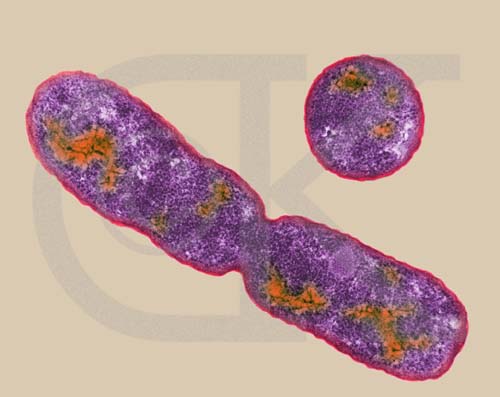

Prokaryotic or binary fission is the mechanism for cell multiplication. Bacteria reproduce by prokaryotic fission , resulting in two genetically identical daughter cells. Bactria have a single chromosome, a circular DNA molecule . The plasma membrane plays a critical role in separating the DNA replicates.
This animation (Audio - Important) describes prokaryotic fission.
Many bacteria also have a plasmid which is a self-replicating circle of DNA that has a few genes. Plasmids are passed from one generation of bacteria to the next. Plasmids are replicated independently of the "main" chromosome. Some plasmids carry genes for antibiotic resistance. Others confer the ability to transfer plasmid DNA during bacterial conjugation .
This animation (Audio - Important) describes bacterial conjugation
REVIEW: �Bacteria reproduce by _____ .�
PREVIOUS
NEXT
LECTURE 13 INDEX
MAIN INDEX